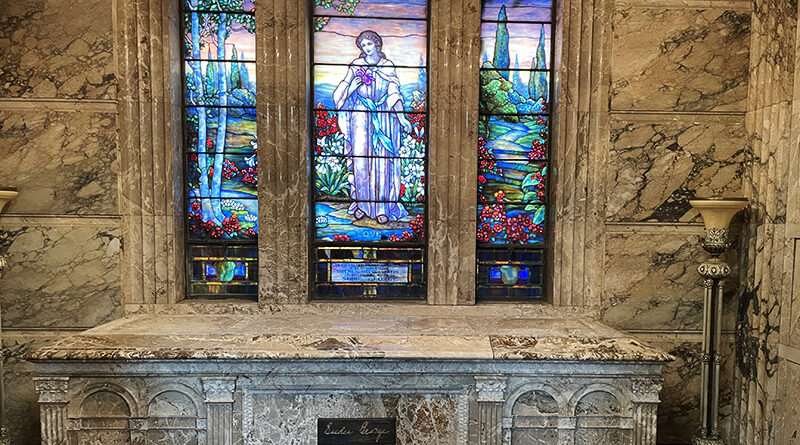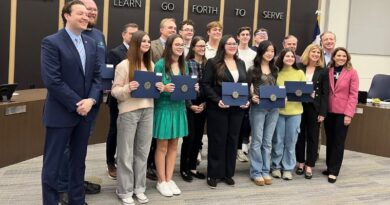History Emerges During Dallas Cemetery Crawl
On the eve of All Hallows Eve, I found myself wandering through cemeteries and mausoleums as a participant in Preservation Dallas’ 2021 Fall Tour – Cemeteries of Dallas.
Historically, Preservation Dallas hosts its Fall Architectural Tour – inaugurated in 1996 with the houses of Clifford Hutsell – but in our paranormal world, cemeteries provided an alternative open-air adventure on a crisp autumn day. Learn more about the organization and its future events at preservationdallas.org.
Over two decades ago, I joined one of the Intown Outings to Greenwood Cemetery and remembered that our city’s history is written on the headstones there. I learned that familiar street names Gaston, Lemmon, and Field also belonged to prominent business and civic leaders.
Along with Greenwood, seven other historic cemeteries were on the self-guided tour: Western Heights Cemetery, Oak Cliff Cemetery, Oakland Cemetery, Freedman’s Memorial Cemetery, Temple Emanu-El Cemetery, Sparkman/Hillcrest Memorial Park & Mausoleums, and McCree Cemetery. They serve as timelines for the expansion of our city, revealing stories about poverty, slavery, reconstruction, segregation, prosperity, and adversity.
One hundred billion people have lived and died before us, and cemeteries represent a small moment of history.
Teresa Schnur
David Preziosi, executive director of Preservation Dallas, welcomed participants to an architectural symposium sponsored by Sparkman/Hillcrest Funeral Home in the beautiful marble chapel of the Hillcrest Mausoleum designed by noted architect Anton Korn in 1936.
Versar, Inc., a leader in cultural resources management, sponsored the event. Dr. Michelle Wurtz Penton, cultural resources group manager at Versar and a City of Dallas Landmark Designation Committee member, was a panelist. She began at Versar as an intern focused on excavating and analyzing unmarked historic burials at the Potter’s Field of Greenwood Cemetery.
John H Slate, Dallas’ city archivist, served as moderator. The panel also included Tony Hanson, a genealogist and board member of the Texas State Genealogical Society, and Teresa Schnur, a funeral director with Sparkman/Hillcrest.
“Cemeteries tell us about our past and about our city limits,” Wurst Penton explained. “Cemeteries originally lay outside of the city on land not suitable for development. Burial grounds existed long before they were established as (for profit) cemeteries.”
The historic cemeteries of our city have shrunk over time as development encroaches on the land. Freedman’s has seen the most change with four land transactions requiring reinterment of 11,000 individuals.
As a genealogist, Tony Hanson sees cemeteries as documented evidence that a person existed. “Headstones, like birth and death records, preserve information,” he said, “and where a person was buried provides information on their religion and their social status.”
As a funeral director, Teresa Schnur is familiar with funerary traditions and practices.
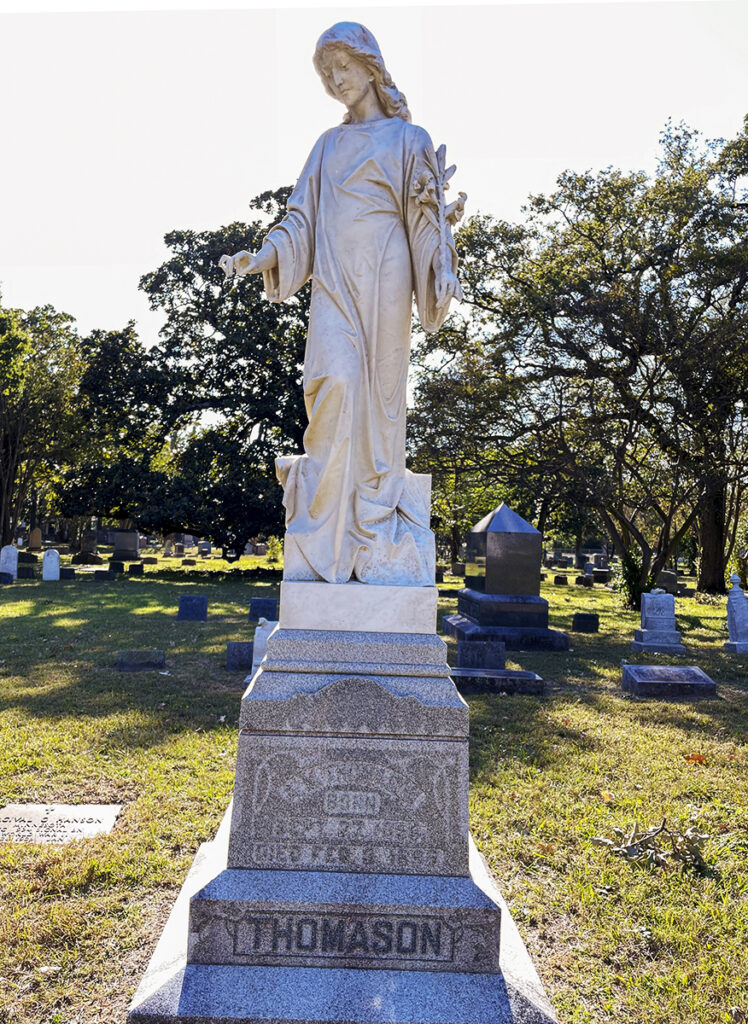
Oakland Cemetery has a number of interesting memorials, sculptures and vaults. 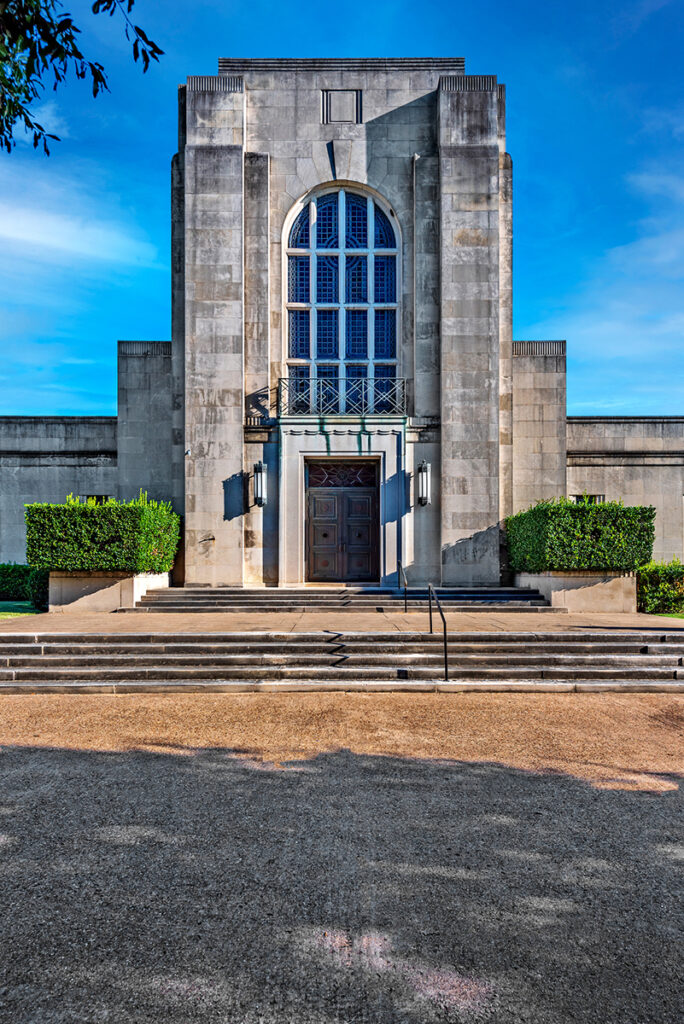
Noted architect Anton Korn designed the limestone Hillcrest Mausoleum in the Beaux Arts style with Art Deco detailing. 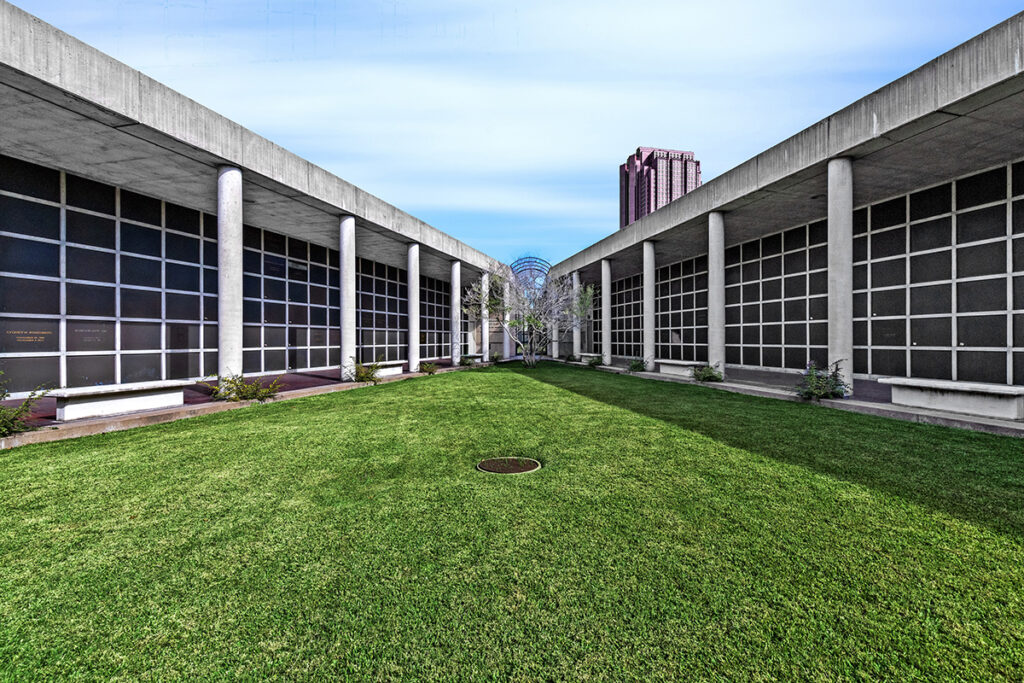
The building, erected in 1936-1937, includes cathedral ceilings, grand marble hallways and crypts, and beautiful stained-glass windows.
“One hundred billion people have lived and died before us, and cemeteries represent a small moment of history,” she said.
“Historic cemeteries shrink over time, crosses and markers deteriorate, and stones sink,” she added. “Some individuals, like paupers, were buried outside of the fence and are forgotten. Other cemeteries are abandoned. Cemeteries like Sparkman/Hillcrest are perpetual care cemeteries where graves and crypts receive care year-round.”
Thankfully, archeologists, genealogists, and volunteers are working to document and preserve these cemeteries for the future.
Cemetery Chronology:
Oak Cliff Cemetery
First Burial 1844
Notable Families: Leonards and Wrights
The oldest public cemetery in Dallas County
Western Heights Cemetery
Established 1848
Notable Families: Stuck, Cole, Loupot, Coombes, and Fisher
Notorious Burial: Clyde “Chestnut” Barrow
Of Note: metal crosses and tombstones with German-language epitaphs
Hillcrest Memorial Park & Mausoleums
A Texas Historical Site
First Burials 1850s
Developed on land owned by William Barr Caruth
Notable Crypts & Graves: Mickey Mantle, Tom Landry, Greer Garson, Ross Perot, The Caruth Family, John Tower (Historic Marker), Judge Sarah T. Hughes, Mary Kay Ash, Jack Kilby
Architects buried here: James Cheek, Roscoe P. DeWitt, Charles S. Dilbeck, Marion Foshee, George F. Harrell, Frank O. Witchell, Anton Korn, Mark Lemmon, George Dahl
McCree Cemetery
Dallas City Landmark
First Burial 1862
Notable Families: McCullough, Griffin, and Goforth
Preservation Dallas is actively engaged in preservation work at McCree using grant funds received from the B.B. Owen Foundation.
Freedman’s Cemetery and Memorial Park
Established in 1869 by former slave-owner W.H. Boales
An exclusively African-American burial ground
Graves face east into “the Rising sun”
Wooden slabs mark the head and feet of the graves
Graves decorated with fresh-water mussel and seashells, broken china, marbles, dolls, toys, glass vessels, and pressed glass
Temple Emanu-El Cemetery
First Burial 1872
Notable Families: Neiman, Linz, Sanger, Harris, and Titches
“Rabbis Row” has the graves of Rabbis David Lefkowitz, Levi A. Olan, and Gerald Klein and their wives.
The mausoleum was designed by architects Duane and Jane Landry
Many of the headstones include both the English and the Hebrew name.
Greenwood Cemetery
First Burial 1875
Established by William H. Gaston (developer of much of East Dallas & founder of the State Fair of Texas) & W. H. Thomas
Notable Families: Slaughter, Cockrell, Oram
Oakland Cemetery
First Burial 1891
Notable Families: Dealey, Ervay, Thornton, Grauwyler, Armstrong, Zang, Belo, Minyard, Gano, Loudermilk, and Lawther
A “rural garden cemetery” with many beautiful monuments and sculptures, two designed by Achille Canessa of Genoa, Italy

